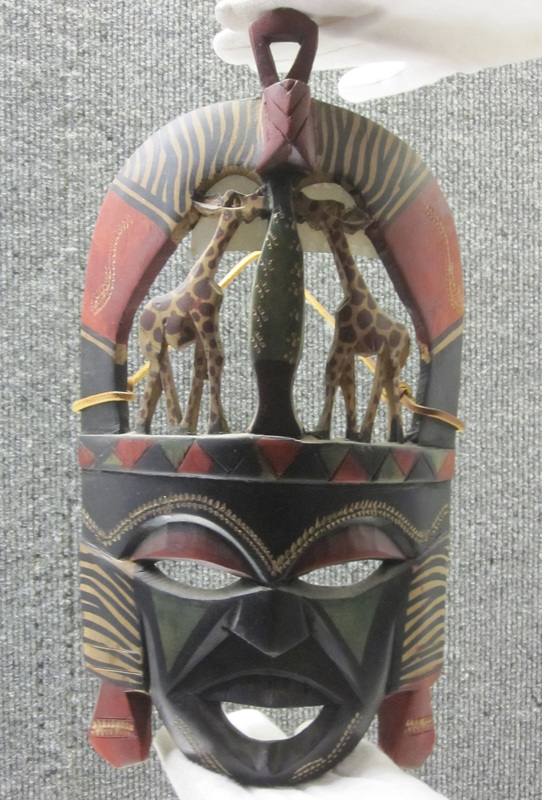
Dr. David M. Coffey (1950-2014)
Did you know “Doc” Coffey?
A professor of agriculture for over 35 years, Dr. David M. “Doc” Coffey was a world traveler throughout his life. He was the first 4-H exchange student in Indonesia. He received his BS and MA from Western Kentucky University and his Ed.D in Vocational Technical Education from Virginia Tech in 1978.
From his travels to Indonesia in college to his numerous study-abroad programs, each trip was an adventure for Dr. Coffey. As Jan Yon of Kentucky Ecuador partners reflected,
“Spend any time at all with David Coffey and you became one of his students. I had the good fortune to travel through Ecuador with a group of WKU students under David’s leadership. Each day, even the most exhausting ones, ended with a group exercise known as “Reflection”. Reflection begins with full glasses of whatever and the toast, “ariba, abajo, al centro, al dentro”, that is, “up high, down low, to the middle, with-in” The toast, accompanied by appropriate gestures, is followed by a question of David’s devising. “What did you learn today? What did you learn about a fellow traveler? Which of your perceptions was challenged today?” As a non student, a contemporary of David, as a person who generally finds it preferable to watch from the wings, I expected to be spared the oral mini quiz. I wasn’t. Furthermore, it was clear that several of our group were neither comfortable with nor skilled at impromptu speaking. None of us were let off the hook. In time, in a very short time, all of us became more than resigned to Reflection; we became as eager as preschoolers at Show and Tell for the daily ritual.”
As a memento of his travels, Dr. Coffey purchased masks produced by the cultures he visited, starting with his college trip to Indonesia. He was also given masks as gifts from students, family and friends. His collection of 140 masks now resides at the Kentucky Museum and has been featured in installations including one in the WKU Art Department Corridor Gallery. As the Art Department recalled on their website dedicated to the collection, “Dr. Coffey was an expert at creating community – and many within his broad community of family, colleagues, former students and friends are part of the story of this collection, or ‘faces behind the masks.’”

Mask 67, from Kenya.
Though Dr. Coffey passed in 2014, his legacy lives on in these masks. Recently, the collection was utilized by Dr. J. Farley Norman (WKU Professor, Psychological Sciences) and Gatton Academy student Sydney P. Wheeler (2019, Greenwood High School) in the first scientific study of the general effectiveness of masks (other than Japanese Noh masks). In other words, can masks communicate emotion?
As stated in the study’s introduction,
“Masks have been used for important religious, societal, and cultural purposes for at least ten thousand years. As examples, consider the functions of masks in three world regions: Africa (e.g., Liberia), Southeast Asia (e.g., Borneo), and the Pacific Northwest coast of North America (e.g., British Columbia, Canada). In Africa, masked figures served as powerful agents of social control, exercising authority at judicial proceedings, settling disputes, serving as police, administering justice and discipline, creating laws, enforcing peace, etc. Masks were also used to promote the fertility of agricultural crops, and to facilitate the healing of illness. They were also employed at important personal events, such as birth, initiation into manhood, advancement in rank, and death. Finally, masks were used in comedy and entertainment. In Borneo, the functions of masks were similar to those employed in Africa: they were used to invoke protection for agricultural crops, to invoke protection from disease, were used at funerals and marriages, and for comedy. In the Pacific Northwest of North America, masks were utilized at judicial proceedings and were employed for crowd control and the maintenance of public order. Masks were also used at important social events from birth to death (e.g., birth, naming, marriage, illness, remembrances of dead family members).
Many masks are created by the sculptor or artist with the deliberate intention of inducing particular emotion(s) in human perceivers. For example, according to Kecskési and Vajda “some masks were intended to shock or horrify, others to astonish or to make audiences laugh” (p. 14). One can indeed perceive strong expressions of emotion from masks. […]
Given that artists have been creating masks for many thousands of years from cultures all around the world, it is surprising that almost no scientific research evaluating the perception of emotion from masks has been conducted to date. Some studies have investigated the perception of emotion from Japanese Noh masks, but there is nothing else.”
Farley and Wheeler conducted interviews with 51 adults, who were asked to evaluate 32 masks from the Dr. David M. Coffey Collection along six dimensions: happiness, sadness, anger, fear, surprise and disgust. Through these interviews, they determined that masks which include facial features can reliably communicate emotions experienced in everyday life. Their study was published in PLOS One on January 15, 2020, and is available to read here.
You can view the David M. Coffey mask collections in this gallery created by the WKU Department of Art.
Want to help preserve these masks? Adopt one! For $25, you can adopt a single mask – and be recognized in the mask’s KenCat and exhibit labels. Your gift provides funding to care for this collection, ensuring its continued use in exhibits and programs, as well as honoring Dr. Coffey’s life and legacy.
To adopt a mask, please complete this form, using the Notes section to indicate which mask you would like to adopt.
Have questions? Please email Tiffany Isselhardt, Development and Marketing Manager, at tiffany.isselhardt@wku.edu

I would like to adopt a mask. Anything from the Dominican Republic or Honduras.
Thank you, Dexter! We received your email and will be in touch.